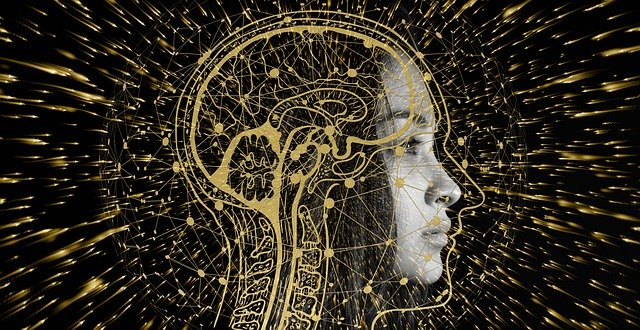Beginning in December 2019, a series of patients with symptoms resembling viral pneumonia with unknown etiology detected in Wuhan, China.China has first reported to the WHO country office in China on 31 December 2019. However, the cause of disease with a clinical manifestation of infected patients include fever (77-98%), cough (59-81%), fatigue (38-98%) myalgia (11-34%), sputum production (28-56%), and headache (6-33%) and it spread rapidly throughout China. In the month of January 8, 2020, eventually novel coronavirus (nCoV) was identified as the seventh member of the Coronaviridae by the Chinese Centres for Disease Control and Prevention and disease symptoms resemble the other two families of coronavirus.
Role of artificial intelligence during COVID-19 pandemic
Artificial Intelligence (AI) has been increasing its potential in the field of medical science and public health. The emergence of AI has not only enabled better understanding of infectious diseases, pandemic prediction but also helped in reducing time for drug discovery. Artificial intelligence is moving the field of COVID-19 infection and helping in its diagnosis, transmission prediction, drug discovery and treatment. Across the globe, technologies like AI are being used to track and combat the spread of COVID-19.
Diagnosis
AI has helped in the detection of individuals who are at risk of COVID-19 infection. Thermal cameras were used to identify individuals with high temperature. Mathematical modelling and emerging intelligence are improving surveillance. AI systems like Health Map helped in tracking the spread of the disease and thus helped in deciding the area for immediate action. Infervision’s CT-AI model has helped in COVID-19 epidemic management. The AI software has been used in the detection of visual signs of the pneumonia-related with COVID-19 on lung CT scans images. Thus the software has helped in screening the patients and prioritizing them for further testing. With the advent of this technology doctors now need not engage themselves in manually reading images of each patient. This demonstrates the ability of AI to develop efficient methods in identifying the population at risk.
Transmission
Artificial intelligence has been used in the prediction of COVID-19 transmission. The Long Short Memory Transfer Model and the neural algorithms have been used to predict numbers of new infections over time. With the use of epidemiological parameters like transmission probability, rate of incubation, recovery or death probability etc. the prediction of transmission was made possible. The intelligent system predicted the peak of infection on 4th Feb 2020 with 95,000 cases by April end. Almost 85,000 cases were reported on 28th April 2020 in China which was very close to the prediction made by the intelligent system. Thus, the prediction by the AI-led in the preparation of the numbers of required doctors, medical staff, ventilators and other supporting equipment at the peak time.
Treatment
AI can help accelerate drug treatments and vaccine discovery. The intelligent system can screen through a lot of chemical compounds and can run the simulation tests for drug discovery. With the help of AI researchers and easily and efficiently narrow down the number of chemical compounds for trials and further testing. Deep learning intelligent systems can contribute to the identification of new drug targets with the help of protein structures which can further help in the discovery of the potential drug.
The Robots
Robots come with AI, thus they too have the potential to tackle the COVID-19 pandemic. Robots can be deployed for disinfection and medication and food delivering tasks in a time of COVID-19 outbreak. There are three main areas where AI in the form of robots can help (a) clinical care (b) logistics and (c) reconnaissance. Robot-controlled noncontact ultraviolet light devices are being used to reduce contamination from highly exposed surfaces in hospitals. Instead of disinfecting the surfaces manually, these robots can help in effective disinfection and risk reduction to cleaning personnel. Robots are also helpful in the diagnosis and screening of infected populations by the use of vision algorithms and thermal sensors. Robotic systems can allow detection of infecting agents and automated drones can be employed for safe sample transfer. Social robots can be deployed for interacting with people in times of quarantine so that proper mental health of the individuals can be maintained.
Conclusion
Previous studies have provided more about the COVID-19 by displaying the high degree of similarity with SARS-COv-1, till now no antiviral agents have been identified or are currently available. Therefore racing to find possible novel target treatments to save lives and produce vaccines for future prevention becomes an urgent need for scientists or doctors. Artificial intelligence is helping research institutions, companies and various other organizations in tackling the COVID-19 pandemic situation in the best possible way.
Reference
- https://www.who.int/emergencies/diseases/novel-coronavirus-2019
- Cui, J., Li, F. & Shi, Z. Origin and evolution of pathogenic coronaviruses. Nat Rev Microbiol 17, 181–192 (2019). https://doi.org/10.1038/s41579-018-0118-9
- Juan A. Siordia, Epidemiology and clinical features of COVID-19: A review of current literature, Journal of Clinical Virology, Volume 127, 2020, 104357, ISSN 1386-6532,
- Jiumeng Sun., Wan-Ting He., et al., COVID-19: Epidemiology, Evolution, and Cross-Disciplinary Perspectives, Trends in Molecular Medicine, 2020,
- https://www.nejm.org/doi/full/10.1056/NEJMc2004973?query=recirc_mostViewed_railB_article
- Agrebi S, Larbi A. Use of artificial intelligence in infectious diseases. Artificial Intelligence in Precision Health. 2020 :415-438. DOI: 10.1016/B978-0-12-817133-2.00018
- https://global.infervision.com/
- hYang Z, Zeng Z, Wang K, et al. Modified SEIR and AI prediction of the epidemics trend of COVID-19 in China under public health interventions. J Thorac Dis. 2020;12(3):165–174. doi:10.21037/jtd.2020.02.64
- https://www.futurithmic.com/2020/03/27/how-ai-might-help-diagnose-track-covid-19/
- https://robotics.sciencemag.org/content/5/40/eabb5589
